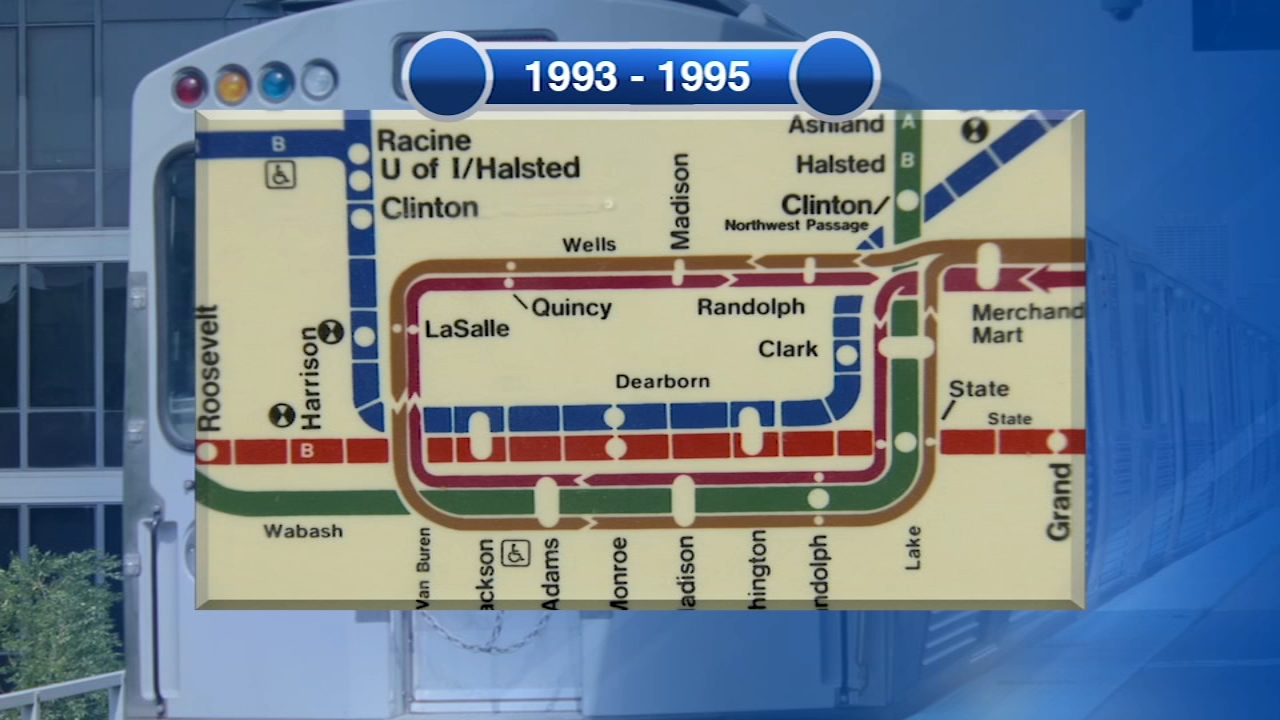30 years of Chicago transportation changes

CHICAGO (WLS) -- This week we're celebrating 30 years of our morning show.
The city of Chicago has changed quite a bit, transportation-wise, over three decades, and Roz was there reporting on all of those stories!
She takes a look at some of the biggest changes including two major construction projects, a lot of bike lanes, and a street-turned-into-a-mall - turned back into that great street!
Part 1:30 years of changes on the CTA

The biggest change in city transportation over the past 30 years began with a shift in attitude.
"In the 1980s, everything was very auto oriented and our streets were designed to carry as many cars as possible and as fast as possible to get them to the expressways," said CDOT Deputy Commissioner Luann Hamilton.
Safety became a priority with the Americans with Disabilities Act of 1990. Intersections had to have ramps and today they also include domed pavement and audible traffic signals. State Street became that great street again in 1996 when it re-opened to traffic after 16 years of only allowing buses along the State Street Mall.
In the early 90s, federal money became available for other forms of transportation and the Mayor's Bicycle Advisory Council was born. Today there are over 300 miles of bikeways, as well as protected bike lanes.
In 2013 Divvy came into the picture with 750 bikes. Now, there are more 6,000. Protected bike lanes were also part of the Loop Link, exclusive bus lanes to more efficiently move Loop bus traffic.
RELATED: 30 years of changes on the Illinois Tollway

Federal funds also helped to create the 606 Elevated Trail in 2015. Another gem, the Chicago Riverwalk. The idea of a riverfront promenade actually dates back to Daniel Burnham's 1909 Plan of Chicago, that's a little before my time!
More recently the reconstruction of Wacker Drive was also the beginning of today's Riverwalk. The Wacker Drive reconstruction was so big and so expensive it had to be done it two parts. The original east-west structure was rebuilt in the early 2000s.
"It had a big impact because Wacker is the circulator that gets traffic around downtown and allows them to get to the bridges and out of downtown and onto the expressway network," Hamilton said.
RELATED: Celebrating 30 years of ABC7's morning show!

Because of that impact, Wacker was never fully closed, it was rebuilt one block at a time and reopened the same way, the first section between State and Dearborn.
The north/south portion of Wacker was originally built in the 50s and wasn't in as bad of shape, so it wasn't rebuilt until 2012. The other major CDOT accomplishment: The Museum Campus Project in the late 90s.
"What we did was shift northbound Lake Shore Drive lanes to the west so they were immediately adjacent to the southbound lanes, freeing up land to the east to develop a campus for the museums.
South Lake Shore Drive also got a rebuild from McCormick Place to 67th Street in the early 2000s and in 2013 it was extended from 79th to 92nd streets, along the site of the old US Steel South Works.






